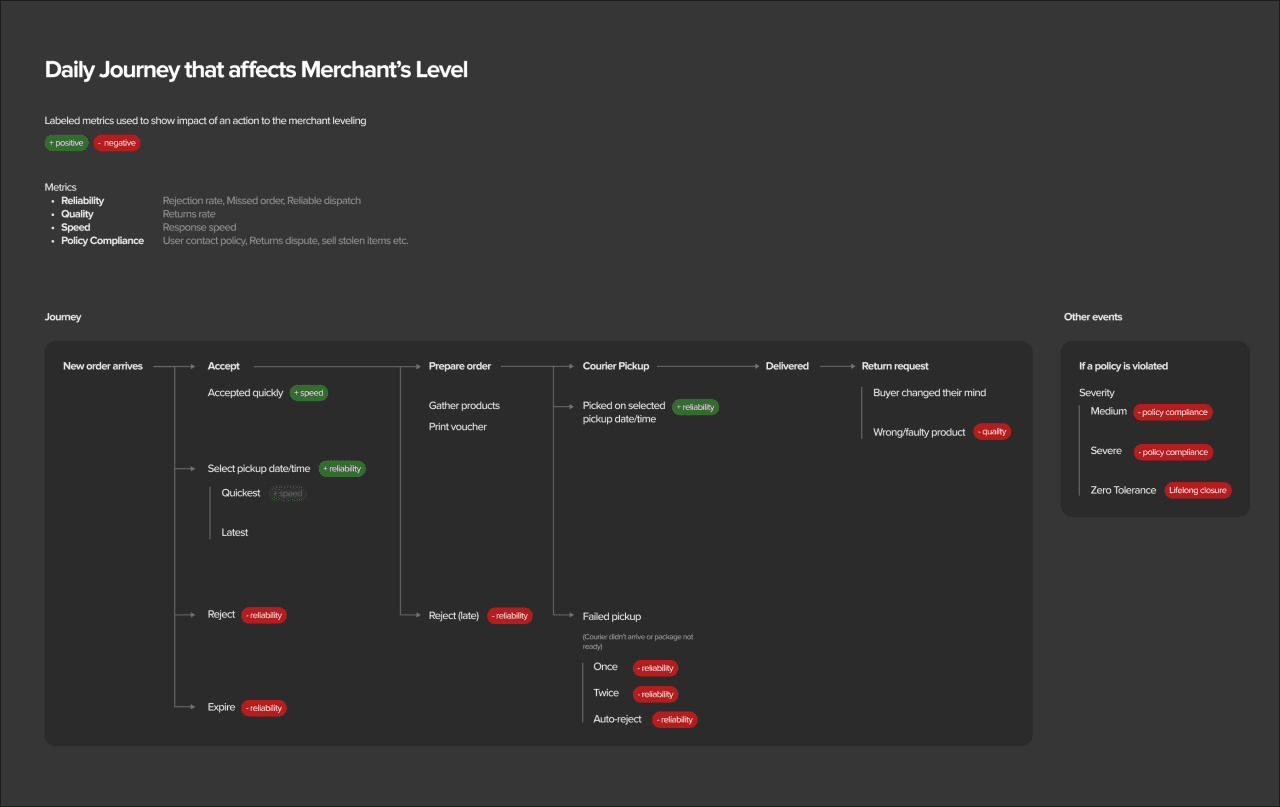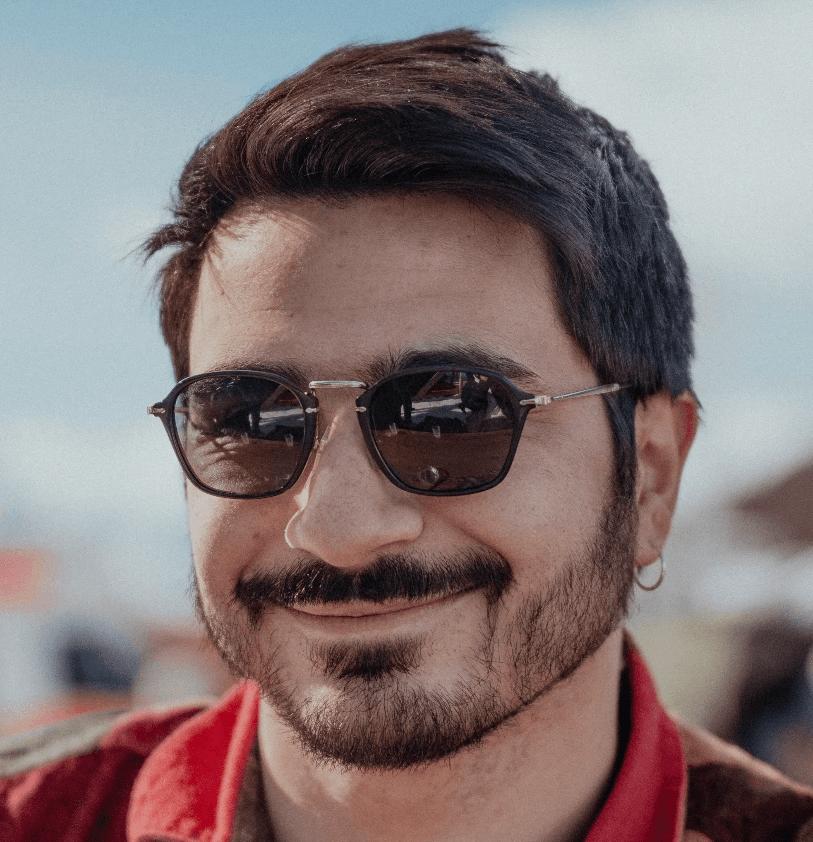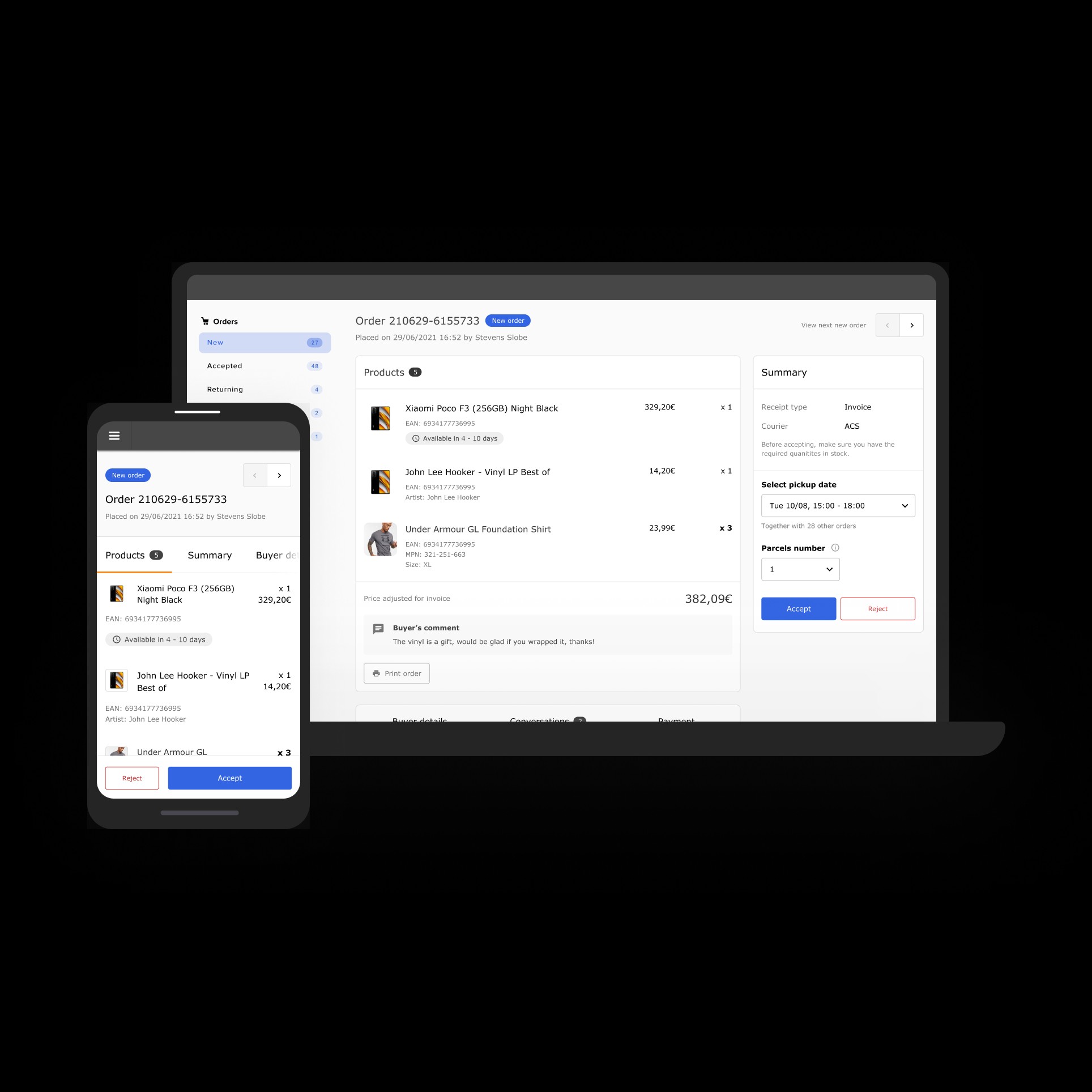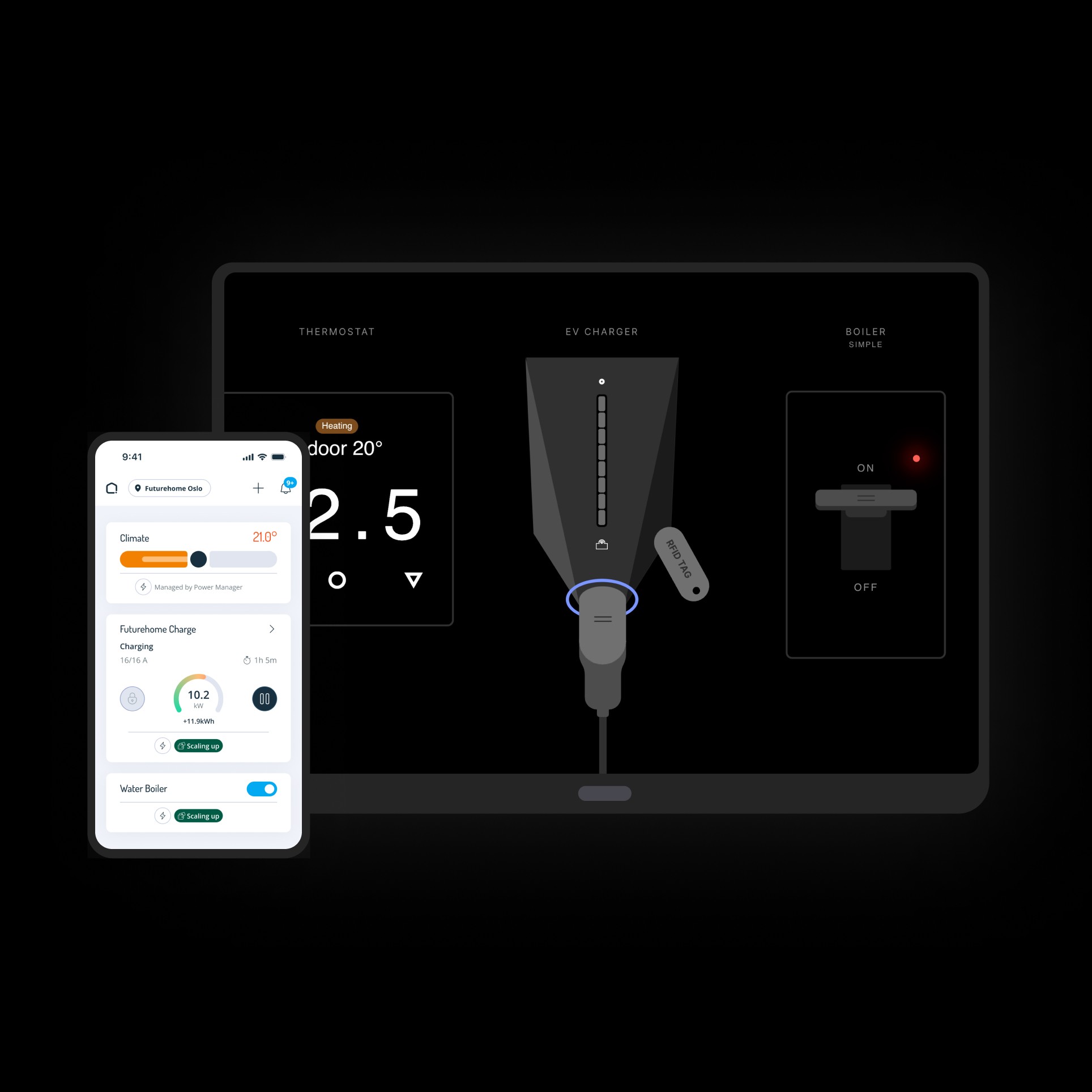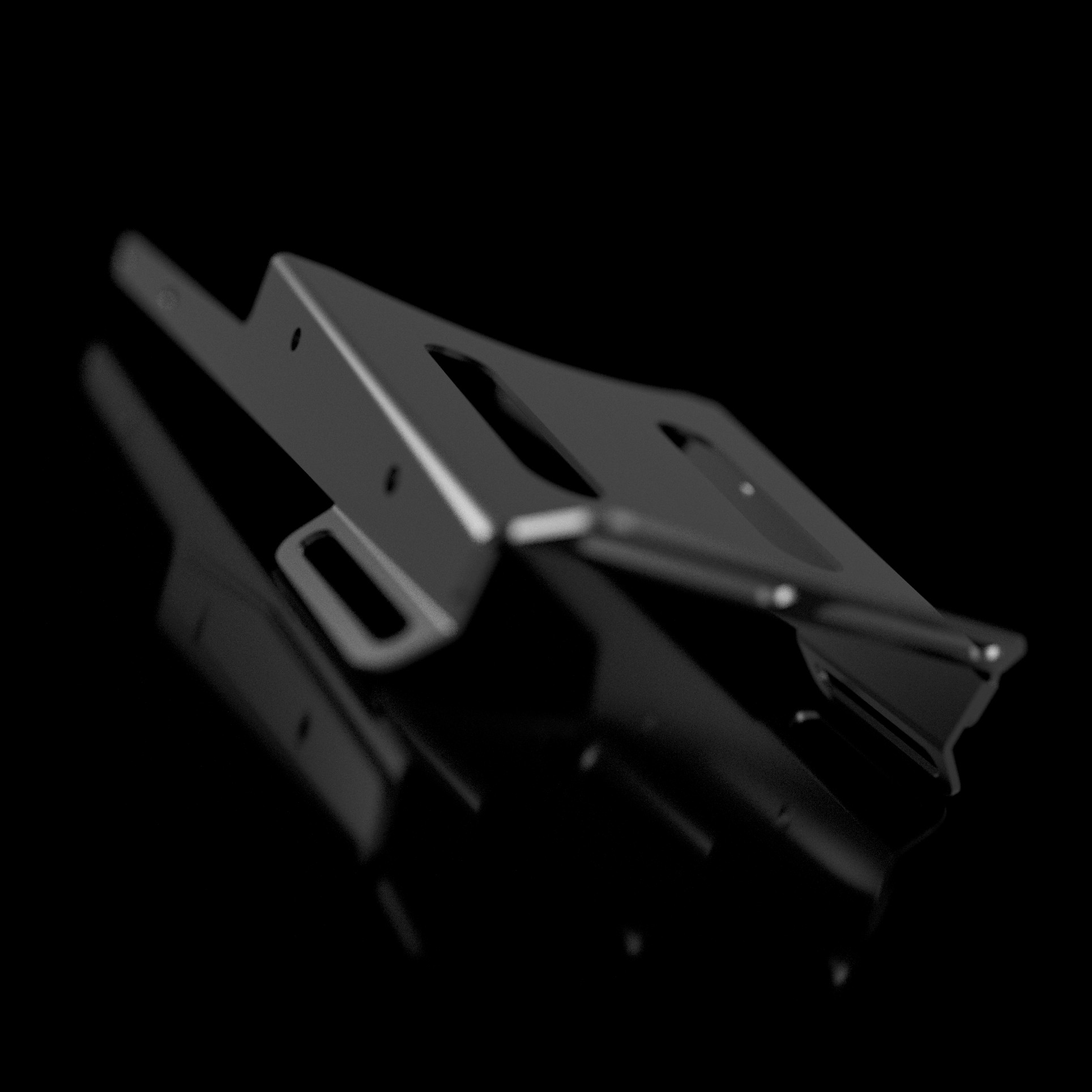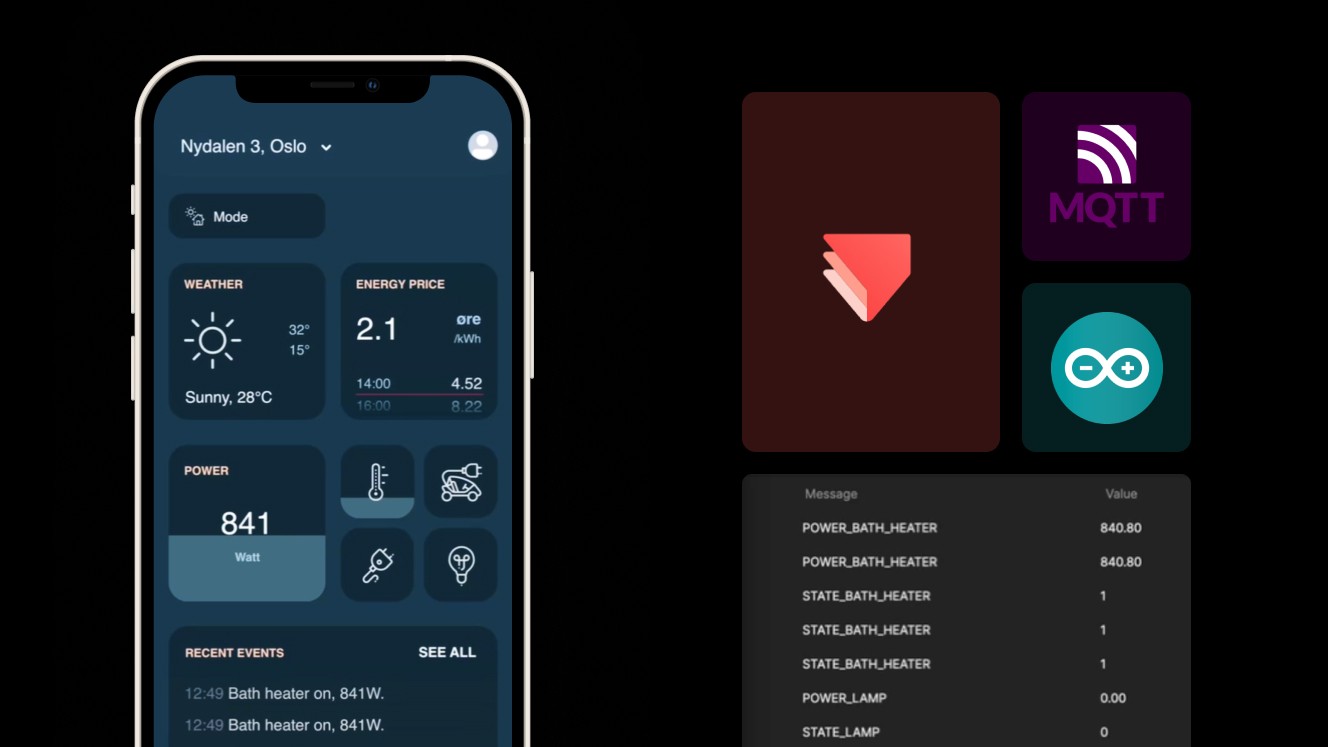My Contribution
The first designer to join Partner’s divison; until then all 17 designers were focused on the client side interface of Skroutz.
Triggered the transition to Figma from Sketch
Demonstrated the value of advanced prototyping with ProtoPie; got us licenses
Familiarized Partner’s division with Design Thinking
Usability Research became a part of the daily process
Actively extracting usability insights via HotJar with user surveys, heatmaps, recordings with highlights.
Design Auditor; uncovered design debt on merchant’s platform
Design System; grid systems for merchant’s platform
Presenter, showing the progress of our initiatives to the whole company
Highlights
Merchant’s Orders UX/UI: Radical redesign of two very busy and critical pages in merchants panel. Used user research findings, conducted brainstorming with the team, made speculative designs, split them into smaller feasible iterations, validated them with designers through design critiques. Measured UX success through hotjar surveys and compiled a blogpost about the whole process and outcomes which received positive feedback from everyone including upper management. Read more on blog →
Design Audit: The design debt was huge whenI came to the company. Last year, I analysed with the partners design team the existing design patterns at merchants panel. Together we revealed design debt, planned a strategy and started working on the merchants design system. Inspired the Skroutz core designers and they got involved with us to co-develop same UI foundations accross skroutz. Overall, the partners design team effort showed the importance for a common design language and I am happy to have contributed in such a critical way.
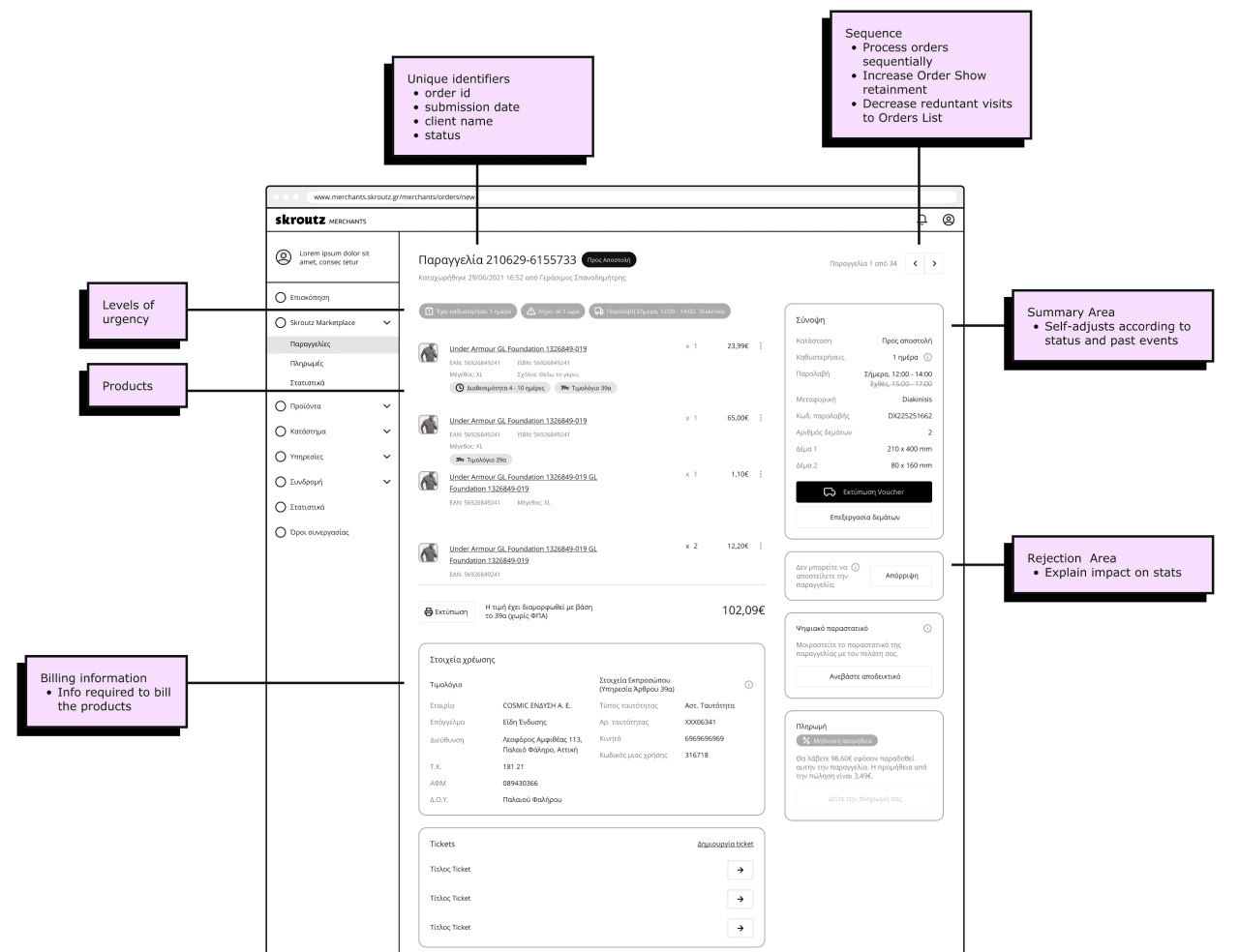

New Grid System: My personal effort on the DS was focused on the Grid systems. I audited, researched, proposed and iterated on a new grid system for the merchants panel. Demonstrated that today’s grid system is flawed and needs to be rethought to accommodate merchant needs. With data at hand (hotjar, ganalytics, gspreadsheet) we had the ability to identify merchant trends on browser widths & usage on all devices, thus helping us define a better grid system easy for everyone to understand, more scalable for the future.
Storefronts: Our expertise on merchant’s needs gave us the ability to upgrade the merchant’s Storefront page with brand elements. We conducted two usability studies: one with users and one with merchants. They showed contradictory needs and it was a challenge for us to find the right balance between relevant product discovery and making merchants feel ownership of their storefront page.
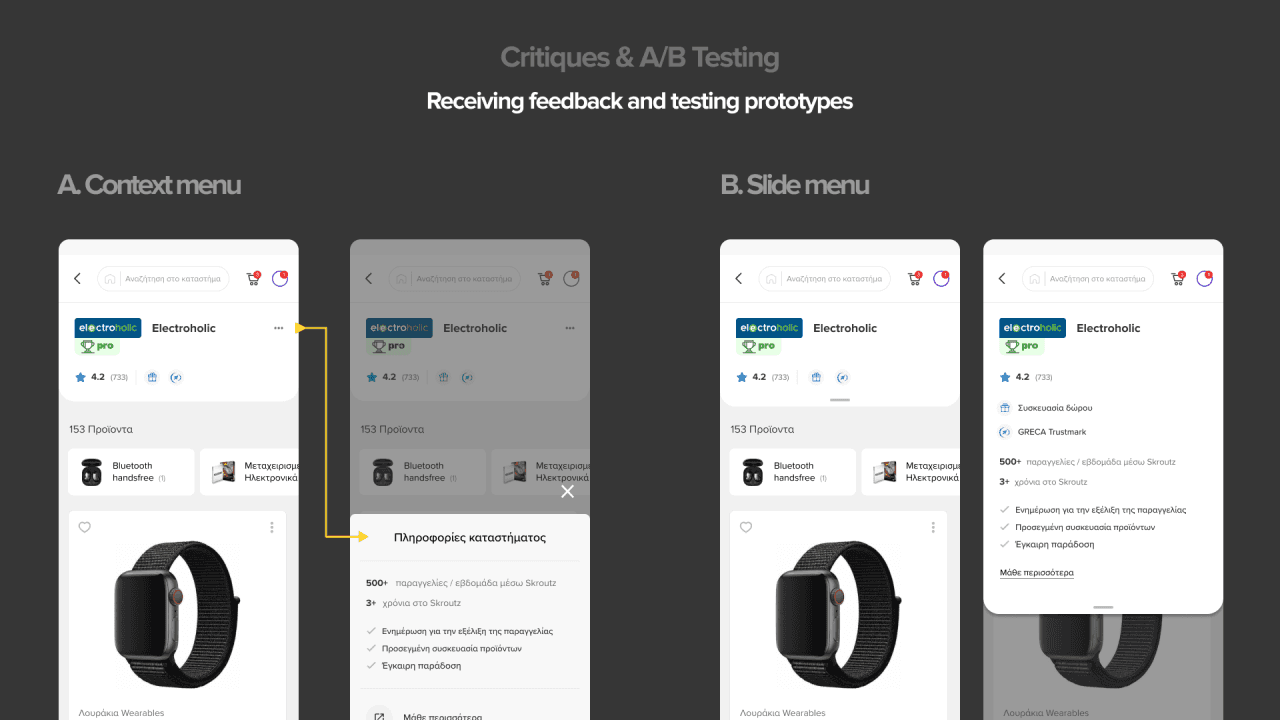
Process
Working modes adapt based on project requirements. The usual flow is as follows: Briefing, Discovery, Ideation & Prototyping, Feedback, Final Deliverable. Although there might be times where more research and analysis might be needed. In such cases, I might use different techniques in my process including:
Information Architecture Design
Content Analysis
Task Analysis
Personas & User Scenarios
Requirements Generation
Speculative Design (ideation of how the product could feel in the future)
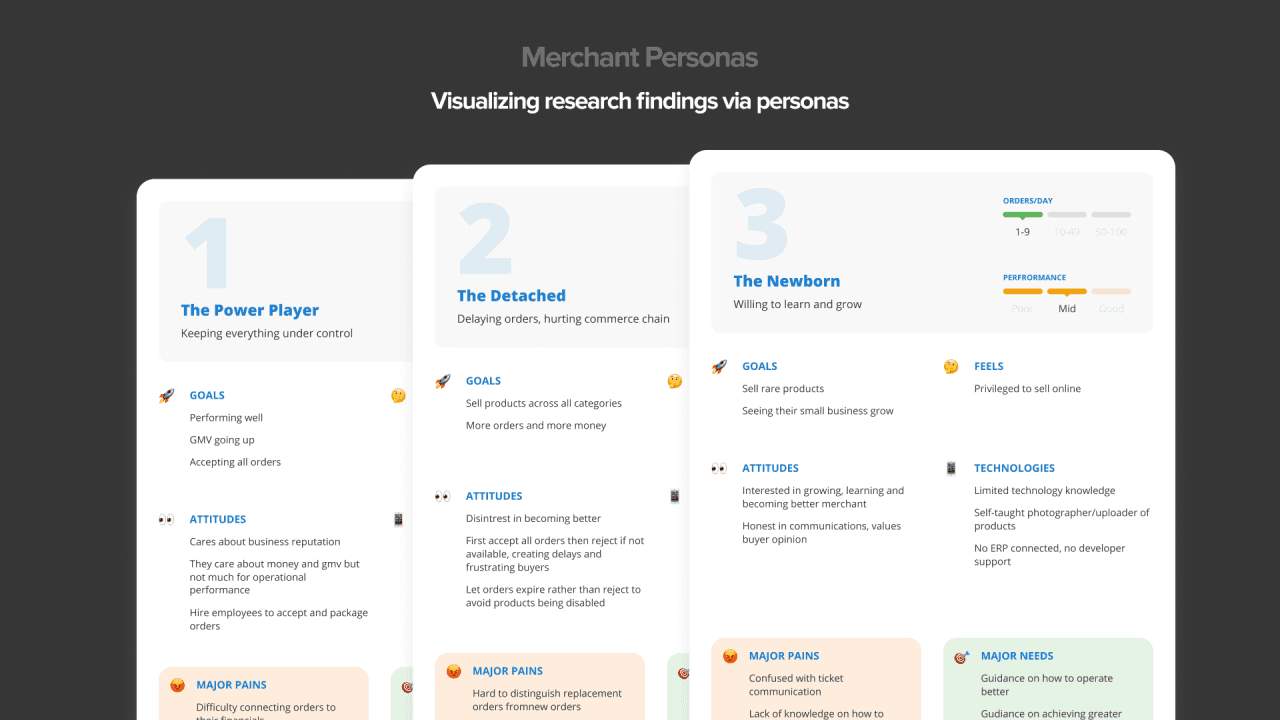
Reflection
Being a product designer, digital or physical products, means being customer-focused. At Skroutz.gr the greatest challenge was to balance needs between merchants & consumers. I was constantly looking for the problem, not the solution - something that product teams struggle to accept. This meant that I would constantly push for involving User Research team in our projects before any design process started to uncover customer needs. It meant that I would dedicate 20% of my time on monitoring how users use our products that we released (via hotjar, ganalytics, dovetail, and other data) to identify strengths, weaknesses and design opportunities to plan for upcoming iterations. And all these felt very fulfilling to do and I will continue doing.
Being a product designer means being humane. I was an active part of a team, eager to listen, learn and evolve with the brilliant-minded colleagues that I happened to be surrounded with at the Partners division of Skroutz.gr. It meant that I wouldn’t work on a silo, I would involve the team in the design process, ask for help, co-create design visions at project beginnings, conduct workshops and brainstorming sessions together to ensure everyone’s voice is heard, and be there for my colleagues during the development phase.
In the end, everyone’s contribution is valuable and everyone wants to have fun. It also meant that when something seemed wrong to me, I would reach out to my colleagues with good intentions and discuss about it. In 2 years, we managed to transform the Partner’s division from a small ‘family’ to a large cross-functional team of experts that learned faster than ever about user need. We built together a safer space for everyone to join, speak, listen and contribute while delivering consistent, transparent and trust-inspiring software for the next generation of e-commerce leaders in Greece. ✌️
